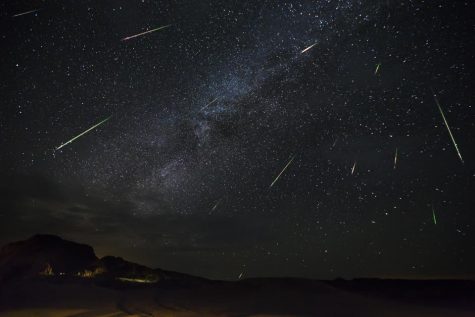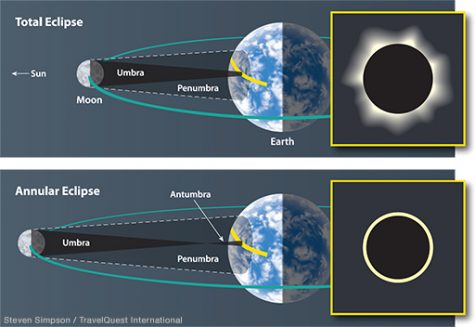Eyes to the Skies
May 3, 2021
Here on earth, we can see a tiny slice of space just by looking up at the sky. There’s no need to gear up in a space suit just to see some stars (unless of course you want to). Just grab a blanket, some bug spray, and head on outside after dark.
The remainder of this year is full of celestial events to check out! To see these events, it’s recommended that you find an open area after dark with little to no light pollution.
There will be a supermoon on April 27th, May 26th, and June 24th. Three or four times a year, the moon orbits closer to the earth while it’s in its full moon stage. This makes the moon appear bigger and brighter making it a super sight to see.
Meteor showers occur when debris left by meteors finds itself in Earth’s orbit. They then get caught in the atmosphere and burn up, causing streaks of light in the night sky. These are also more commonly known as shooting stars.
These can be seen a number of times this year in the northern hemisphere. The best times to view meteor showers is when they’re at their peak.
May 6th-7th is the peak of the Eta Aquarids meteor shower that produces up to 30 meteors per hour! October 21st-22nd is the peak of the Orionids meteor shower. This shower will produce up to 20 meteors per hour. The peak of the Taurids meteor shower will be November 4th-5th, producing up to 5-10 meteors per hour.
A solar eclipse happens when the moon passes between earth and the sun. These occur about two weeks before or after a lunar eclipse.
On June 10th there will be an annular solar eclipse, which means that the moon covers the sun, but leaves the outer ring exposed. December 4th, there will be a total solar eclipse. This means the moon will cover the sun entirely.
These celestial events only happen at certain times, so be sure not to miss them.
Happy sky-watching!


